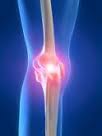 A Mayo Clinic orthopedic surgeon suspects that the nagging pain and inflammation that women can experience in their knees may be different from what men encounter, and she has been chosen to lead a novel U.S.-Canadian study to explore the question. The Society for Women’s Health Research (SWHR) has awarded a group of researchers a grant to lead a pilot project to understand whether biological differences between men and women affect the incidence and severity of knee osteoarthritis. Mary I. O’Connor, M.D., chair of the Department of Orthopedic Surgery at Mayo Clinic’s campus in Florida, will be the study’s principal investigator.
A Mayo Clinic orthopedic surgeon suspects that the nagging pain and inflammation that women can experience in their knees may be different from what men encounter, and she has been chosen to lead a novel U.S.-Canadian study to explore the question. The Society for Women’s Health Research (SWHR) has awarded a group of researchers a grant to lead a pilot project to understand whether biological differences between men and women affect the incidence and severity of knee osteoarthritis. Mary I. O’Connor, M.D., chair of the Department of Orthopedic Surgery at Mayo Clinic’s campus in Florida, will be the study’s principal investigator.
Osteoarthritis, characterized by the breakdown of cartilage in the joint resulting in stiffness and pain, is the most common form of arthritis. It affects approximately 27 million Americans.
“Knee osteoarthritis is a leading cause of disability in the U.S. and women have greater pain and reductions in function and quality of life from this condition than do men,” Dr. O’Connor says. “Knee osteoarthritis is also more common in women than men.”
While the underlying mechanisms for differences in knee osteoarthritis between men and women are not yet known, recent studies have indicated sex differences at the cellular and molecular levels may influence development of the disease, she says. Answers could provide valuable clues for more effective treatment and possible prevention, Dr. O’Connor says.
The study will examine a variety of human tissues normally discarded during total knee replacement surgery that is performed for severe osteoarthritis. The tissues will be analyzed for possible differences in pain fibers and hormone and vitamin D receptors between female and male patients.
“Our study will be the first to explore if there are true biological differences which result in women having this increased disease burden,” Dr. O’Connor says.
Source: Mayo Clinic.
NOTE: Another study being conducted at Northwestern University is also looking at knee osteoarthritis progression from structural a perspective, e.g., hip muscle strength and knee instability. See our earlier blog on this study by clicking HERE.

Comments